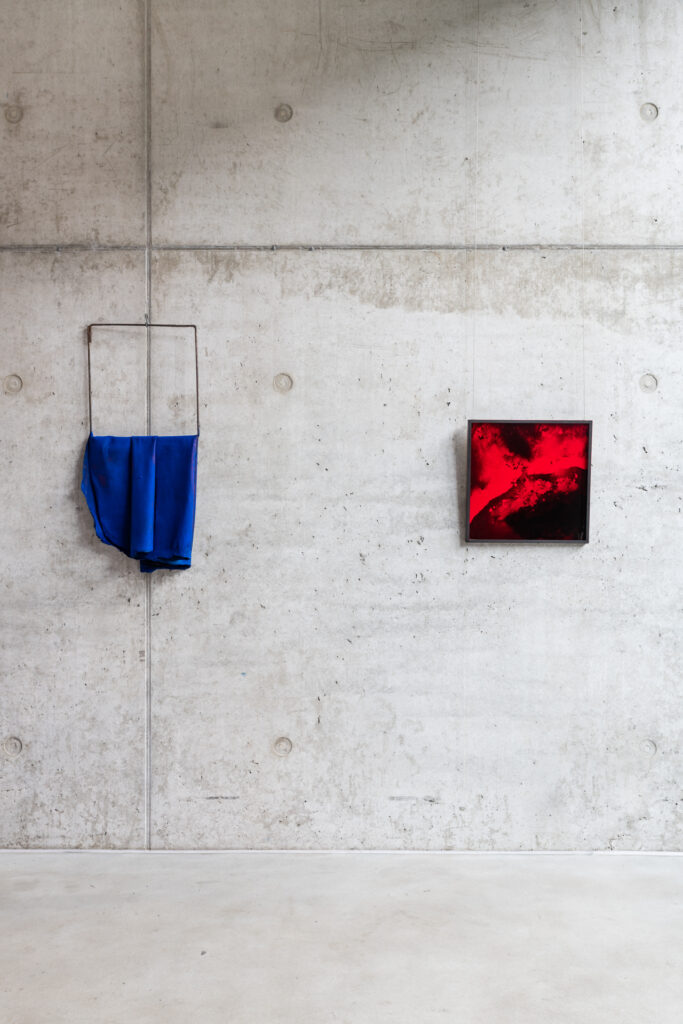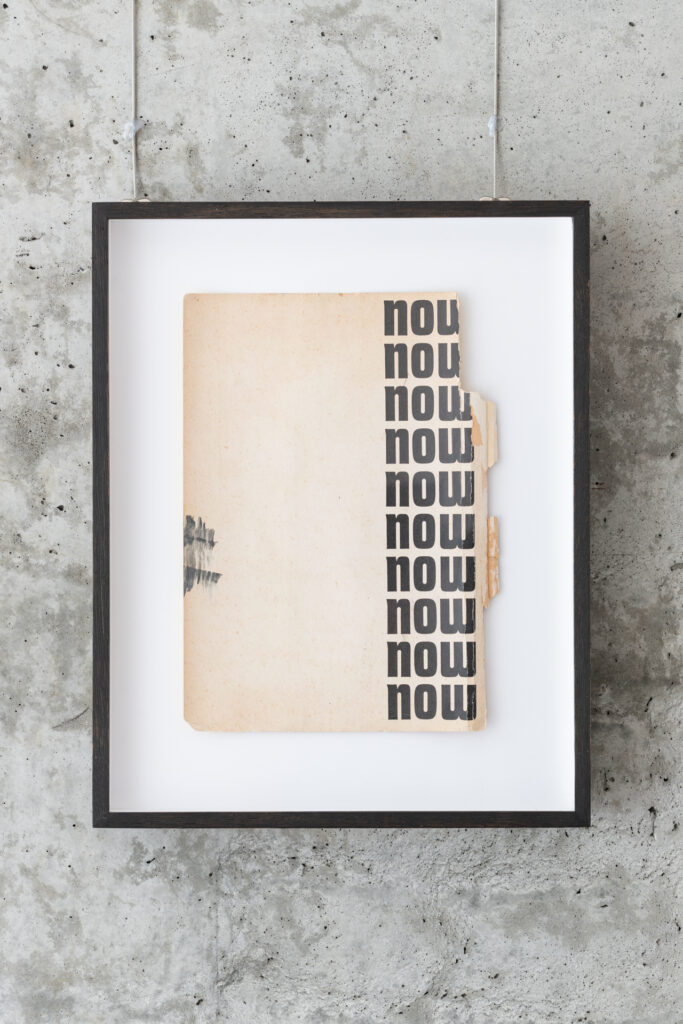
Group exhibition “Idiosyncrasies” by Marta Djourina, NK Doege, Bettina Scholz, Ottjörg A.C. und Ukn Lee at roam project space.
08.06. – 6-9 pm opening
09.06. – 4-7 pm
10.06. – 4-7 pm
15.06. – 4-7 pm
16.06. – 4-7 pm
17.06. – 6-9 pm finissage
*
Group exhibitions of artists usually come about through the initiative of a curator who identifies thematic, formal or material commonalities in their works. Often, the focus of attention then rests on this aspect. It is not infrequently at the expense of the individual quality of the individual works. Group exhibitions regularly ignore the illuminating sentence of art historian E. H. Gombrich, who once wrote: “There is no art; there are only artists.”
In contrast, the exhibition, which brings together the works of three female artists and two male artists in “roam” under the title “Idiosyncrasies”, emphasizes the individual and singular nature of these works. The exhibition title is program. The term idiosyncrasy, which comes from ancient Greek, emphasizes a person’s specific sensitivity to react to the world and reality. Such idiosyncrasies also determine artistic works and cannot be generalized. Their forms of expression are highly idiosyncratic.
Nevertheless, the bringing together of the works in question here in a joint show is not due to pure arbitrariness. An invisible network of concentric circles spans between their artists, connecting them to each other. One of them knows an artist he is friends with. That one knows another artist, and so on. From this a group has finally formed, which is carried qua profession by a common interest: To show themselves publicly with their art.
*
Ottjörg A.C., born in Heidelberg in 1958, is first and foremost an artist, but he is also the initiator and operator of the exhibition space “roam”. For him, art is communication. And hardly conceivable without a political dimension. After graduating from high school, he was active in the Berlin squatter scene. Before joining the Alfred Hrdlicka class for sculpture at the UdK Berlin, he studied journalism and philosophy. Which has made him sustainably sensitized and awake to the precarious state in which the world finds itself. In his art he reacts to it.
*
During his international actions Ottjörg got to know the South Korean artist Ukn Lee, born in Seoul in 1963. He studied painting in Seoul and Braunschweig; in Braunschweig he was a master student of Norbert Tadeusz. Lee is a devoted painter with a singular conception of images. For him, his works are memories that resemble living organisms. They evolve with him and are in principle unfinished for him. Frequent overpaintings bear witness to this. Lee’s paintings are in this way palimpsests of lived life.
*
Ukn Lee’s love for painting connects him with Bettina Scholz, who, in addition to her painting, also produces drawings, installations and objects. In doing so, she draws on art history, film, literature, and music. Her expressive paintings, above all her famous glass paintings, develop a great emotional power. They oscillate between representational allusion and abstract self-assertion and draw the viewer irresistibly into a wonderland of overwhelming colors and forms that can be rediscovered with every encounter.
*
The majority of the objects by sculptor NK Doege also have a painterly effect. For example, when she combines rusty reddish-brown iron and bright blue plastic in one work. However, it is not only the color effect that impresses, but also the synthesis of the different materials, which begin to tell stories as if by themselves. After the first impression of Dadaism has faded away, the works of NK Doege make one think of a successful Coincidentia oppositorum as well as of the marriage of Yin and Yang or the Hegelian dialectic.
*
In a world that is increasingly drifting into the virtual, the photo artist Marta Djourina writes in an unusual way with light on analog photo paper. She uses pinhole cameras transported by pigeons, the electrical charge of our fingertips, the bioluminescence of algae and fungi as well as the power of sunlight and salt water. Her magnificent works have not only opened up new terrain for camera-less photography, but also impress as testimonies to an artistic curiosity with which Marta Djourina is always discovering new sources of light for herself.
As different as the artists’ works may seem, visitors will not hesitate to discern in them similarities as well as differences. This follows the logic of a common hanging; this is how comparative seeing works. The lowest common denominator of all the works is probably narration. In one way or another, they all tell a story about man. And thus about us! In this way they fulfill a desideratum of which we already read in Aristotle’s “Poetics”: Let art negotiate our cause.
– by Michael Stoeber
roam
Lindenstraße 91
10969 Berlin








